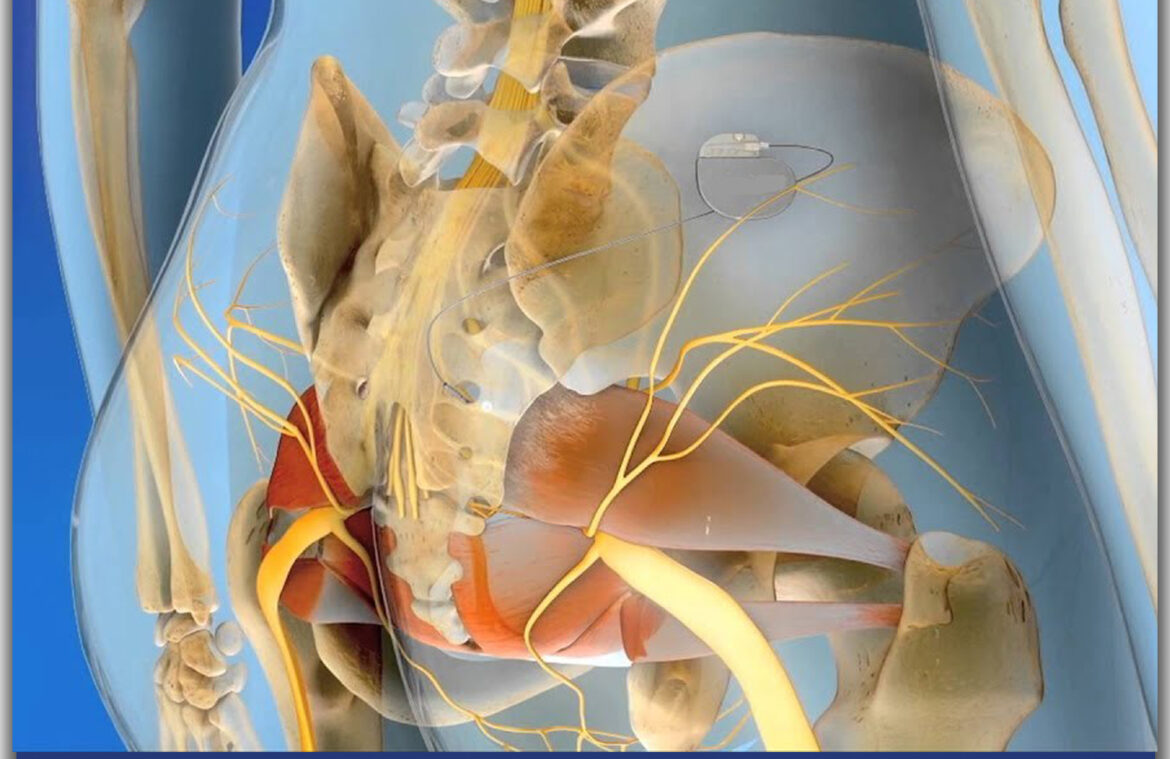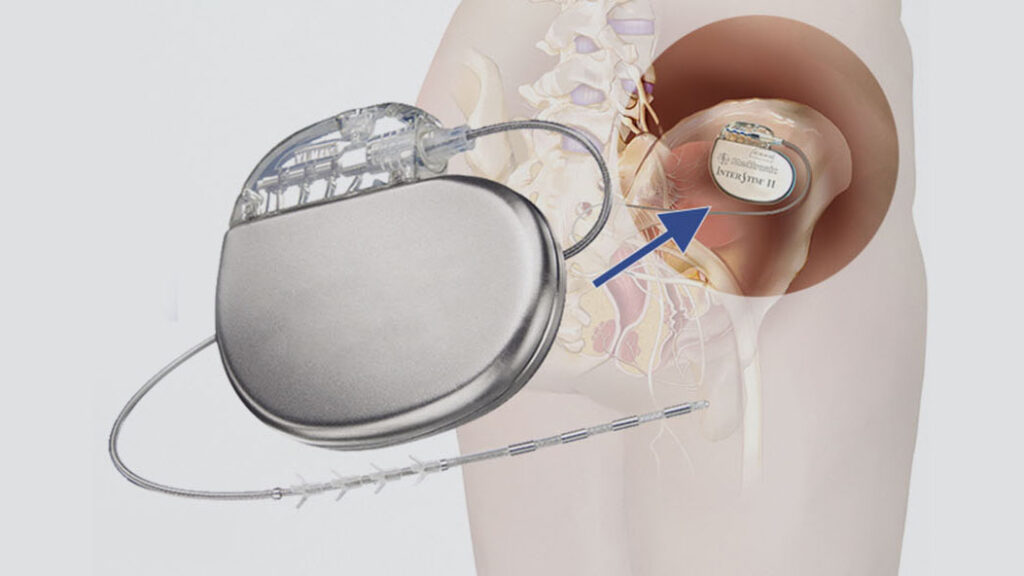
Sacral Neuromodulation
Treatment method that stimulates the nerves in the sacral region and aims to solve the neural problem in the sacral region sacral neuromodulation It is defined as . Sacral neuromodulation, also known as bladder pacing, is used in the treatment of health problems such as frequent urination, urinary incontinence, urinary incontinence, and inability to fully void urine.
Sacral neuromodulation, also known as bladder pacing, is a technological surgical procedure based on the logic of regulating the functions of the systems by stimulating the nerve that regulates bladder and bowel functions. The cable used in the treatment is placed on the nerve bundle that passes through the hip bone and extends to the bladder and intestines. Electrical signals sent by a battery placed under the skin stimulate the nerve bundle and regulate the functions of the bladder and intestines.
In case of overactive bladder treatment methods, if the treatments applied to the patient are inadequate, if the patients do not respond to the treatment methods applied, sacral neuromodulation treatment is applied. Like a pacemaker, in the field of urology, the nerves coming to the bladder are stimulated at the level of the spinal column with the help of a battery implanted in the body, and situations such as overactive bladder or inability to urinate are regulated with a bladder pacemaker.

What is Sacral Neuromodulation?
The functions of the systems are regulated by the bladder pacemaker and the stimulation of the nerve that regulates bladder and bowel functions. The cable used in the treatment is placed on the nerves passing through the hip bone and extending to the bladder and intestines. The signals sent by the battery placed under the skin stimulate the nerves and regulate the functions of the bladder and intestines. In this way, undesirable situations such as urinary incontinence, urinary urgency, and frequent urination are prevented.
What are the Advantages of Bladder Pacing Application?
Based on the logic of supporting dysfunctional nervous systems with the help of batteries sacral neuromodulation The advantages are as follows;
- Performing the test clearly reveals whether the patient will benefit from this treatment.
- The testing process and the permanent placement of the battery are performed with regional anesthesia (local anesthesia). It does not have the risks that general anesthesia has.
- Thanks to the remote control, the time can be adjusted and the device can even be turned off completely.
- Since the battery is rechargeable, its lifespan can be extended up to 15 years.

Bladder Pacemaker in Neurogenic Bladder
Bladder battery is used in the treatment of bladder pathologies. Neurogenic bladder is a disorder that occurs with various symptoms as a result of the bladder muscles not functioning properly due to nerve injuries or diseases at various levels. Due to the disorder in the nervous system, the muscles surrounding the bladder wall constantly contract or relax, causing various problems in urination.
Evaluation of Bladder Battery in Urinary Problems
If the patient experiences urinary problems, bladder pacing is performed if the physician deems it necessary. in the patient bladder battery in his evaluation;
- Peak,
- Evaluation of urology, neurology and psychiatric congresses,
- pee diary,
- Urodynamic examination, EMG,
- Cystoscopy is performed when necessary.
How is Bladder Battery Surgery Performed?
Bladder battery surgery, which is a simple and reliable procedure, can be performed with local anesthesia or general anesthesia. The electrode is placed with the help of a needle on the nerves passing through the hip bone and extending from the bladder to the intestines. After the test signals are sent, the cable is temporarily connected to the battery and tested. Once the patient finds benefit, the battery is permanently placed under the skin and connected to the cable. Sacral neuromodulation The success rate is quite high if the surgery is performed by expert hands.

To whom is Sacral Neuromodulation Therapy Applied?
Sacral neuromodulation therapy is a treatment method used to improve urination disorders such as urinary urgency or urinary obstruction and inability to urinate. Moreover bladder battery treatment; It is frequently applied by urologists in the treatment of diseases such as overactive bladder, frequent urination, inability to urinate, urinary incontinence, and inability to fully void urine.
Who Cannot Have Bladder Pace Treatment?
Among the patients in whom bladder pacing was not applied; Sacral neuromodulation cannot be applied to people with mental retardation, people with psychiatric diseases, people who are not capable of using devices, patients with prostate disease, diabetes, tumor-related urinary obstruction and spina bifida patients with complete nerve transection.
Success Rate in Sacral Neuromodulation Treatment
Treatment of many urination problems sacral neuromodulation treatment is applied. The biggest advantage of the treatment is that there is a testing period. During the testing period, the chance of success of the treatment increases and waste of time with unnecessary surgeries is prevented.
Is Bladder Battery Safe?
The bladder pacemaker, which is placed on the upper hip with a minimally invasive surgical procedure, is a system that can be externally programmed, started or stopped to meet specific treatment needs. Bladder battery application can be turned off with the remote control if needed.
Frequently Asked Questions
It is a treatment method applied to the patient to eliminate various urination problems and bladder problems.
Sacral neuromodulation aims to solve existing problems by stimulating the nerves in the sacral region.
The test procedures to be performed on the patient clearly reveal whether the patient will benefit from Sacral neuromodulation treatment. Since the insertion of the battery is done under local anesthesia, it does not involve the risks of general anesthesia. Adjustments can be made at any time thanks to the remote control. The battery is rechargeable and its lifespan is up to 15 years.
Our treatments
- Prostate cancer
- Bladder Cancer
- Kidney Cancer
- Kidney stone
- Robotic Surgery
- HOLEP
- ThuLEP
- Prostate Biopsy
- hydrocele
- varicocele
- Testicular Cancer
- Urinary tract infection
- Urinary Incontinence in Women
- Urodynamics
- Vesicovaginal Fistula
- Laparoscopy Surgery
- Sacral Neuromodulation
- Laser Prostate Surgery
- Penile Prosthesis Implantation
- Prostate Hot Water Steam Treatment
- Penile Shock Wave Therapy – ESWT
- Male Infertility
- Drug Treatment for Sexual Dysfunction (Erectile Dysfunction)
